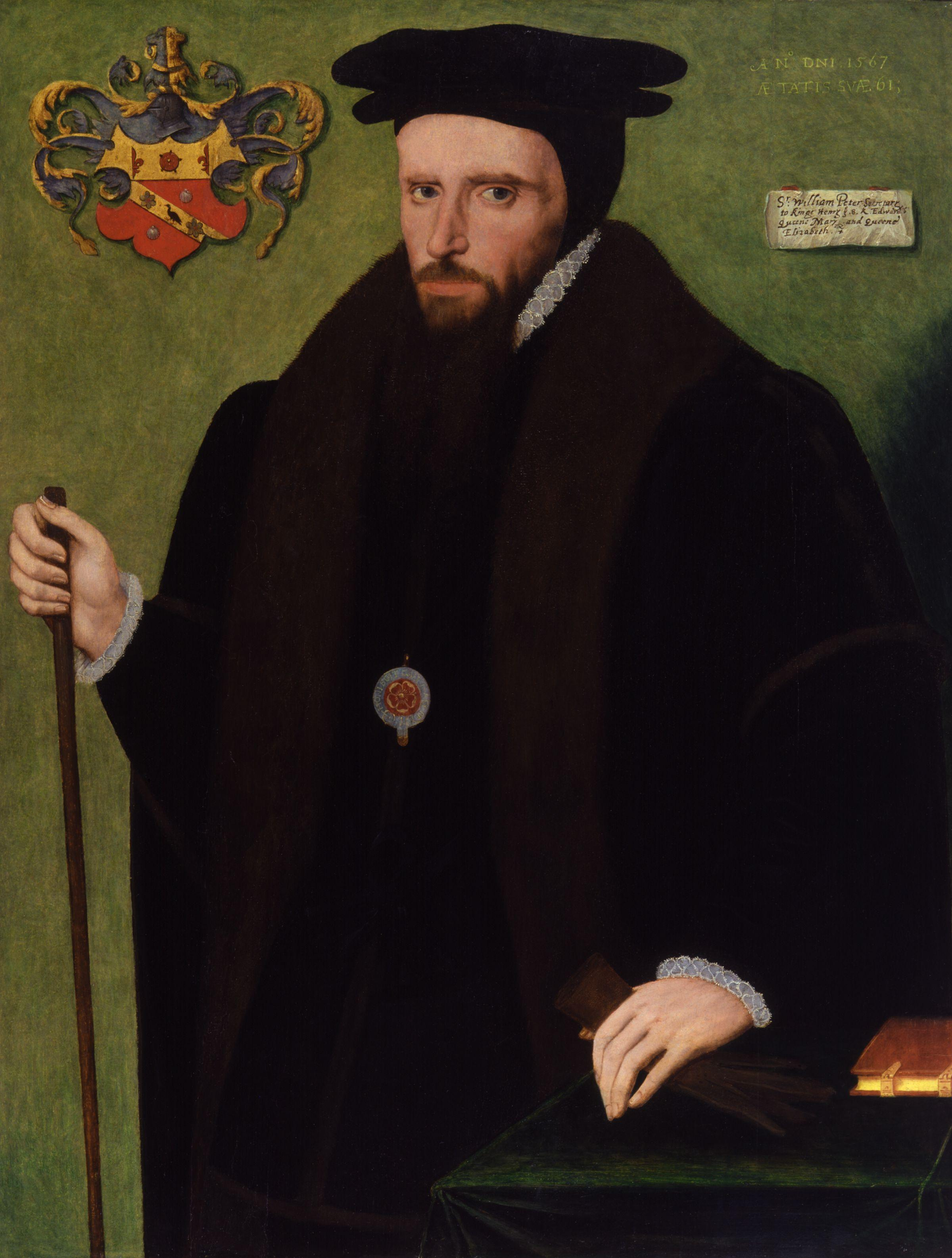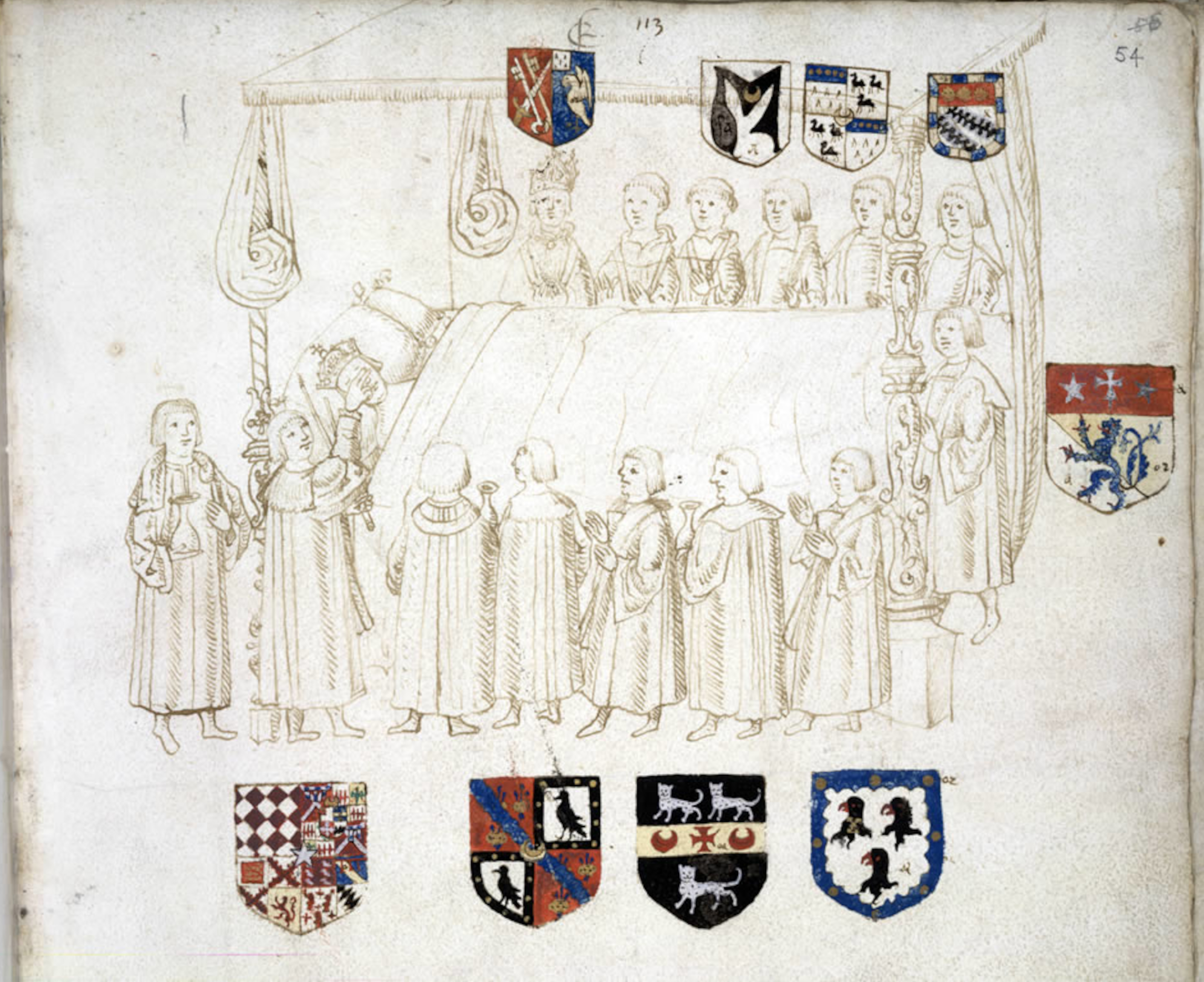|
Philip Hawford
Philip Hawford alias Ballard (died 11 August 1557) was the parish priest (c.1536 – 1557) at Elmley Lovett, Worcestershire. He was also the last Abbot of Evesham and also Dean of Worcester. Life Philip Hawford became Abbot of Evesham Abbey by preferment. He was in negotiations with Thomas Cromwell in 1536 telling Cromwell that he would 'Gladly accomplish' all the promises he had made and be always ready for "the call to preferment" promised him by Cromwell. Philip Hawford was called to preferment on 4 April 1538. Evidently he had bribed Cromwell for his preferment, for in May 1538 William Petre wrote to Thomas Wriothesley that 'touching Mr Cromwell's matter the abbot says it shall be paid to-morrow morning'. And an entry of 400 marks from the abbot is found in Cromwell's account for that month. Hence Philip Hawford became the last abbot of Evesham and effectively 'gave' Henry VIII of England, King Henry VIII the Abbey of Evesham which was destroyed shortly after. He was at some p ... [...More Info...] [...Related Items...] OR: [Wikipedia] [Google] [Baidu] |
Elmley Lovett
Elmley Lovett in Worcestershire, England is a civil parish whose residents' homes are quite loosely clustered east of its Hartlebury Trading Estate, as well as in minor neighbourhood Cutnall Green to the near south-east. The latter is a loosely linear settlement that includes a pub-restaurant and farm shop on the Elmley Lovett side of the boundaries; it continues passing its near-square public green into the parish of Elmbridge, a similarly sized parish over to the east. The village is NNW of Droitwich, but Cutnall Green is closer to 4 miles. St Michael's Church The old stone parish church, much restored, has four very tall lancet windows to each side of the nave and a modest bell tower topped by a tall stone spire. It is flanked by a scattering of tall trees. History The Moule family of Snead's Green House were among the most prominent local landowners from the 1620s until the late nineteenth century, when the family died out in the male line. Deserted medieval village A ... [...More Info...] [...Related Items...] OR: [Wikipedia] [Google] [Baidu] |
Worcestershire
Worcestershire ( , ; written abbreviation: Worcs) is a county in the West Midlands of England. The area that is now Worcestershire was absorbed into the unified Kingdom of England in 927, at which time it was constituted as a county (see History of Worcestershire). Over the centuries the county borders have been modified, but it was not until 1844 that substantial changes were made. Worcestershire was abolished as part of local government reforms in 1974, with its northern area becoming part of the West Midlands and the rest part of the county of Hereford and Worcester. In 1998 the county of Hereford and Worcester was abolished and Worcestershire was reconstituted, again without the West Midlands area. Location The county borders Herefordshire to the west, Shropshire to the north-west, Staffordshire only just to the north, West Midlands to the north and north-east, Warwickshire to the east and Gloucestershire to the south. The western border with Herefordshire includes a ... [...More Info...] [...Related Items...] OR: [Wikipedia] [Google] [Baidu] |
Abbot Of Evesham
The Abbot of Evesham was the head of Evesham Abbey, a Benedictine monastery in Worcestershire founded in the Anglo-Saxon era of English history. The succession continued until the dissolution of the monastery in 1540. List Notes References * * * * {{short description, List of medieval abbots of Evesham Abbey in England * Evesham Evesham () is a market town and parish in the Wychavon district of Worcestershire, in the West Midlands region of England. It is located roughly equidistant between Worcester, Cheltenham and Stratford-upon-Avon. It lies within the Vale of Evesha ... Abbot of Evesham Evesham Abbey ... [...More Info...] [...Related Items...] OR: [Wikipedia] [Google] [Baidu] |
Dean Of Worcester
The Dean of Worcester is the head of the Chapter of Worcester Cathedral in Worcester, England. The current dean is Peter Atkinson, who lives at The Deanery, College Green, Worcester. Crockford's on-line accessed by subscription Tuesday 11 June 2013 06:10 GMT List of deans Early modern *1541–1544 Henry Holbeach (last prior) *1544–1553 John Barlow *1553–1557 Philip Hawford *1557–1559 Seth Holland *1559–1571 John Pedder *1571–1586 Thomas Wilson *1586–1597 Francis Willis *1597–1604 Richard Edes *1604–1608 James Montague *1608–1616 Arthur Lake *1616–1627 Joseph Hall *1627–1633 William Juxon *1633–1636 Roger Maynwaring *1636–1646 Christopher Potter *1646–1649 Richard Holdsworth *1649–1660 ''No dean during the Interregnum'' *1660–1661 John Oliver *1661–1665 Thomas Warmestry *1665–1683 William Thomas *1683–1691 George Hickes *1691–1715 William Talbot *1715–1726 Francis Hare *1726–1746 James Stillingfleet *1746–1751 Edmund M ... [...More Info...] [...Related Items...] OR: [Wikipedia] [Google] [Baidu] |
Thomas Cromwell
Thomas Cromwell (; 1485 – 28 July 1540), briefly Earl of Essex, was an English lawyer and statesman who served as chief minister to King Henry VIII from 1534 to 1540, when he was beheaded on orders of the king, who later blamed false charges for the execution. Cromwell was one of the most powerful proponents of the English Reformation, and the creator of true English governance. He helped to engineer an annulment of the king's marriage to Catherine of Aragon so that Henry could lawfully marry Anne Boleyn. Henry failed to obtain the approval of Pope Clement VII for the annulment in 1533, so Parliament endorsed the king's claim to be Supreme Head of the Church of England, giving him the authority to annul his own marriage. Cromwell subsequently charted an evangelical and reformist course for the Church of England from the unique posts of Vicegerent in Spirituals and Vicar-general (the two titles refer to the same position). During his rise to power, Cromwell made many enemi ... [...More Info...] [...Related Items...] OR: [Wikipedia] [Google] [Baidu] |
William Petre
Sir William Petre (c. 1505 – 1572) (pronounced ''Peter'') was Secretary of State to three successive Tudor monarchs, namely Kings Henry VIII, Edward VI and Queen Mary I. He also deputised for the Secretary of State to Elizabeth I. Educated as a lawyer at the University of Oxford, he became a public servant, probably through the influence of the Boleyn family, one of whom, George Boleyn, he had tutored at Oxford and another of whom was Queen Anne Boleyn, second wife of King Henry VIII. He rose rapidly in the royal service and was knighted in 1543. Sir William Petre was adept at side-stepping the great religious controversies of the day; in January 1544 he was appointed Secretary of State. He navigated the ship of state through the rest of Henry's troubled reign, managing a smooth succession in 1547. He held high office throughout the reigns of Henry VIII, Edward VI, Mary I and Elizabeth I until, owing to ill health he retired a rich man to his manor of Ingatestone, in E ... [...More Info...] [...Related Items...] OR: [Wikipedia] [Google] [Baidu] |
Thomas Wriothesley
Sir Thomas Wriothesley ( ; died 24 November 1534) was a long serving officer of arms at the College of Arms in London. He was the son of Garter King of Arms, John Writhe, and he succeeded his father in this office. Personal life Wriothesley was born at Colatford Wiltshire. His name at birth was Thomas Writhe, and he was the eldest son and second of four children of John Writhe and his first wife, Barbara, daughter of John Castlecombe. The location of Colatford has not been identified, but it was either near Castle Combe or Cricklade. Wriothesley's first wife, whom he married before 1500, was Jane, daughter of William Hall of Salisbury. The pair had ten children together, though their only surviving son was Charles Wriothesley, Windsor Herald of Arms in Ordinary. His second wife was Anne, widow of Robert Warcop with whom he had a daughter who died in infancy. Wriothesley died "worn out with age" in London, on 24 November 1534, and was presumably buried with his family in St Giles ... [...More Info...] [...Related Items...] OR: [Wikipedia] [Google] [Baidu] |
Henry VIII Of England
Henry VIII (28 June 149128 January 1547) was King of England from 22 April 1509 until his death in 1547. Henry is best known for his six marriages, and for his efforts to have his first marriage (to Catherine of Aragon) annulled. His disagreement with Pope Clement VII about such an annulment led Henry to initiate the English Reformation, separating the Church of England from papal authority. He appointed himself Supreme Head of the Church of England and dissolved convents and monasteries, for which he was excommunicated by the pope. Henry is also known as "the father of the Royal Navy" as he invested heavily in the navy and increased its size from a few to more than 50 ships, and established the Navy Board. Domestically, Henry is known for his radical changes to the English Constitution, ushering in the theory of the divine right of kings in opposition to papal supremacy. He also greatly expanded royal power during his reign. He frequently used charges of treason and ... [...More Info...] [...Related Items...] OR: [Wikipedia] [Google] [Baidu] |
Cellarer
A cellarium (from the Latin ''cella'', "pantry"), also known as an ''undercroft'', was a storehouse or storeroom, usually in a medieval monastery or castle. In English monasteries, it was usually located in or under the buildings on the west range of the cloister. The monastery's supplies of food, ale and wines were stored there, under the supervision of the ''cellarer'', one of the monastery's obedientiaries In the Middle Ages, an obedientiary or obedienciary (from the Latin ''obedientiarius'', meaning someone in an 'obedient', i.e. subordinate, position) was a lesser official of a monastery appointed by will of the superior. In some cases the word is .... He was often assisted by a ''sub-cellarer''. References {{reflist Christian monastic architecture ... [...More Info...] [...Related Items...] OR: [Wikipedia] [Google] [Baidu] |
Abbots Of Evesham
Abbot is an ecclesiastical title given to the male head of a monastery in various Western religious traditions, including Christianity. The office may also be given as an honorary title to a clergyman who is not the head of a monastery. The female equivalent is abbess. Origins The title had its origin in the monasteries of Egypt and Syria, spread through the eastern Mediterranean, and soon became accepted generally in all languages as the designation of the head of a monastery. The word is derived from the Aramaic ' meaning "father" or ', meaning "my father" (it still has this meaning in contemporary Hebrew: אבא and Aramaic: ܐܒܐ) In the Septuagint, it was written as "abbas". At first it was employed as a respectful title for any monk, but it was soon restricted by canon law to certain priestly superiors. At times it was applied to various priests, e.g. at the court of the Frankish monarchy the ' ("of the palace"') and ' ("of the camp") were chaplains to the Merovingian and ... [...More Info...] [...Related Items...] OR: [Wikipedia] [Google] [Baidu] |
Deans Of Worcester
The Dean of Worcester is the head of the Chapter of Worcester Cathedral in Worcester, England. The current dean is Peter Atkinson, who lives at The Deanery, College Green, Worcester. Crockford's on-line accessed by subscription Tuesday 11 June 2013 06:10 GMT List of deans Early modern *1541–1544 Henry Holbeach (last prior) *1544–1553 John Barlow *1553–1557 Philip Hawford *1557–1559 Seth Holland *1559–1571 John Pedder *1571–1586 Thomas Wilson *1586–1597 Francis Willis *1597–1604 Richard Edes *1604–1608 James Montague *1608–1616 Arthur Lake *1616–1627 Joseph Hall *1627–1633 William Juxon *1633–1636 Roger Maynwaring *1636–1646 Christopher Potter *1646–1649 Richard Holdsworth *1649–1660 ''No dean during the Interregnum'' *1660–1661 John Oliver *1661–1665 Thomas Warmestry *1665–1683 William Thomas *1683–1691 George Hickes *1691–1715 William Talbot *1715–1726 Francis Hare *1726–1746 James Stillingfleet *1746–1751 Edmund Ma ... [...More Info...] [...Related Items...] OR: [Wikipedia] [Google] [Baidu] |







